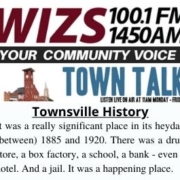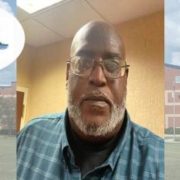TownTalk: Be Safe When Using Space Heaters
The recent fires in Philadelphia and in New York that killed dozens of residents in the past week serve as tragic reminders about home fire safety during the winter months, when about half of all home heating fires occur.
With temperatures dipping into the 20s at night, it may be tempting to keep a space heater turned on to keep the chill off, but any supplemental heat unit should be turned off overnight – or even when you leave the room, according to a checklist from the National Fire Protection Association.
There are numerous items to double-check to make sure your home is as safe as possible, from testing smoke detectors and installing carbon monoxide alarms to knowing the proper use of space heaters and portable generators.
When dealing with winter storms that knock out power and create icy conditions, it is important to use care and caution inside and outside the home. Make sure that the street address is clearly visible from the road so emergency personnel can quickly identify your location. It’s also important to keep drives and sidewalks as clean of ice and snow as possible, for your own safety and in case emergency personnel need to get up to your home.
Be ready with flashlights – not candles – in case the power goes out.
And never use generators indoors. They should be kept away from structures when in use.
Supplemental space heaters should never be plugged into a power strip or used with an extension cord. Anything that can catch fire should be kept at least three feet away from space heaters.
All these precautions should be taken during and after a winter storm or extended cold snap, but having properly functioning smoke detectors and carbon monoxide detectors in your home is something that can be done at any time of the year.
Test these devices monthly and replace batteries or the entire detector when that annoying chirping sound begins.
The Henderson Fire Department has smoke detectors and Lee Edmonds said city residents can call the department at 252.430.1877 and fire officials will come and install them in their homes.
The Office of State Fire Marshal Mike Causey has posted the following reminders on its webpage. Visit www.ncosfm.gov to learn more.
- Keep anything that can burn at least three feet away from heating equipment, such as the furnace, fireplace, wood stove, or portable space heater.
- Have a three-foot, kid-free zone around open fires and space heaters.
- Never use your oven to heat your home.
- Have a qualified professional install stationary space heating equipment, water heaters or central heating equipment according to the local codes and manufacturer’s instructions.
- Have heating equipment and chimneys cleaned and inspected every year by a qualified professional.
- Remember to turn portable heaters off when leaving the room or going to bed.
- Always use the right kind of fuel, specified by the manufacturer, for fuel burning space heaters.
- When refueling kerosene heaters, be sure to move them outside to refill.
- Make sure the fireplace has a sturdy screen to stop sparks from flying into the room. Ashes should be cool before putting them in a metal container. Keep the container a safe distance away from your home.









